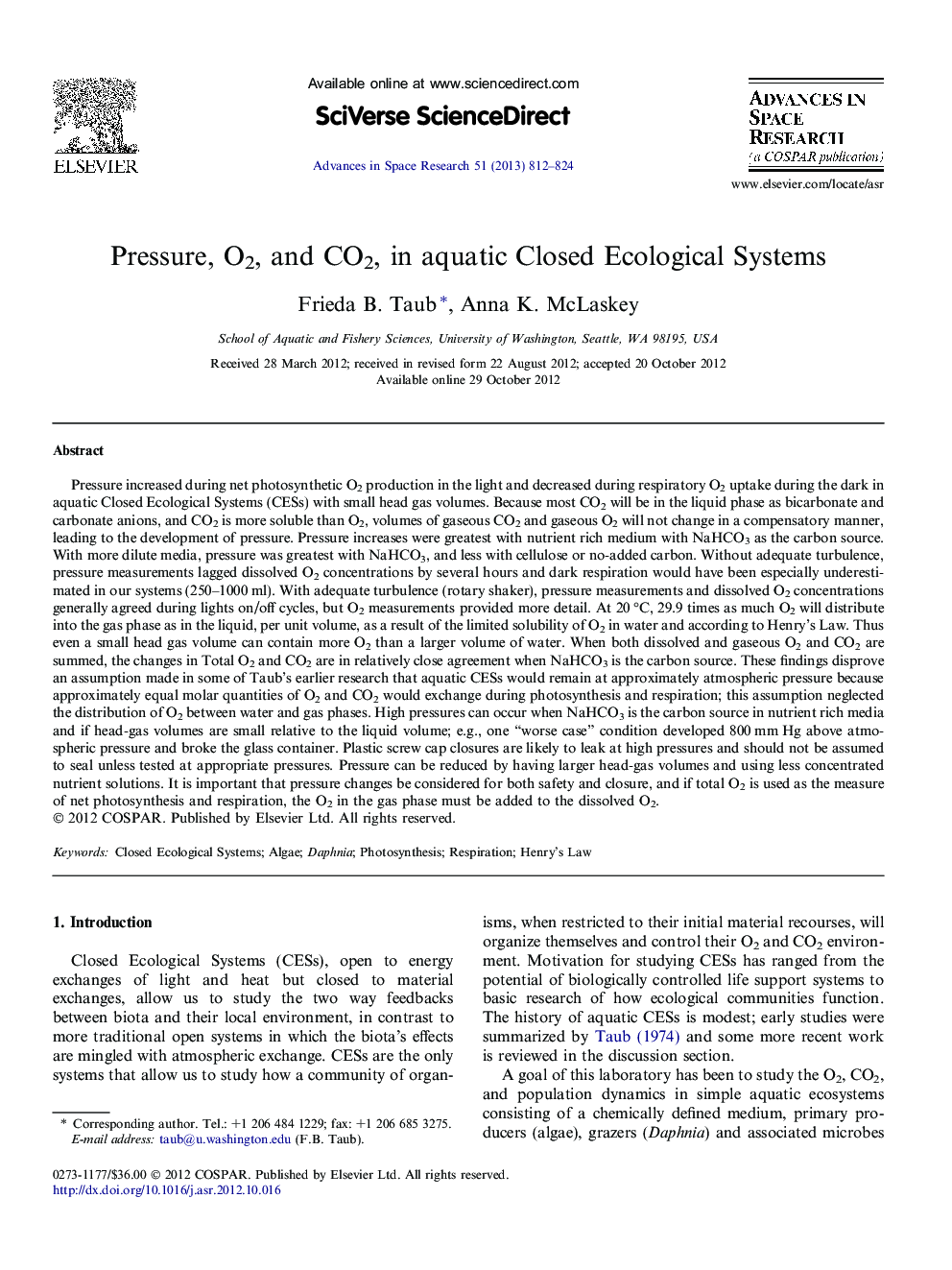| کد مقاله | کد نشریه | سال انتشار | مقاله انگلیسی | نسخه تمام متن |
|---|---|---|---|---|
| 1764852 | 1020074 | 2013 | 13 صفحه PDF | دانلود رایگان |

Pressure increased during net photosynthetic O2 production in the light and decreased during respiratory O2 uptake during the dark in aquatic Closed Ecological Systems (CESs) with small head gas volumes. Because most CO2 will be in the liquid phase as bicarbonate and carbonate anions, and CO2 is more soluble than O2, volumes of gaseous CO2 and gaseous O2 will not change in a compensatory manner, leading to the development of pressure. Pressure increases were greatest with nutrient rich medium with NaHCO3 as the carbon source. With more dilute media, pressure was greatest with NaHCO3, and less with cellulose or no-added carbon. Without adequate turbulence, pressure measurements lagged dissolved O2 concentrations by several hours and dark respiration would have been especially underestimated in our systems (250–1000 ml). With adequate turbulence (rotary shaker), pressure measurements and dissolved O2 concentrations generally agreed during lights on/off cycles, but O2 measurements provided more detail. At 20 °C, 29.9 times as much O2 will distribute into the gas phase as in the liquid, per unit volume, as a result of the limited solubility of O2 in water and according to Henry’s Law. Thus even a small head gas volume can contain more O2 than a larger volume of water. When both dissolved and gaseous O2 and CO2 are summed, the changes in Total O2 and CO2 are in relatively close agreement when NaHCO3 is the carbon source. These findings disprove an assumption made in some of Taub’s earlier research that aquatic CESs would remain at approximately atmospheric pressure because approximately equal molar quantities of O2 and CO2 would exchange during photosynthesis and respiration; this assumption neglected the distribution of O2 between water and gas phases. High pressures can occur when NaHCO3 is the carbon source in nutrient rich media and if head-gas volumes are small relative to the liquid volume; e.g., one “worse case” condition developed 800 mm Hg above atmospheric pressure and broke the glass container. Plastic screw cap closures are likely to leak at high pressures and should not be assumed to seal unless tested at appropriate pressures. Pressure can be reduced by having larger head-gas volumes and using less concentrated nutrient solutions. It is important that pressure changes be considered for both safety and closure, and if total O2 is used as the measure of net photosynthesis and respiration, the O2 in the gas phase must be added to the dissolved O2.
► Aquatic CESs can develop high pressures because O2 is less soluble than CO2 in water.
► CO2 and O2 gas volumes will not change in a compensatory manner in aquatic CESs.
► Avoid high pressures by using low nutrient concentrations and large head gas volumes.
► Leakage can occur if closures are not stronger than the pressures that develop.
► Pressure is a surrogate for O2 production, but less sensitive than O2 concentrations.
Journal: Advances in Space Research - Volume 51, Issue 5, 1 March 2013, Pages 812–824